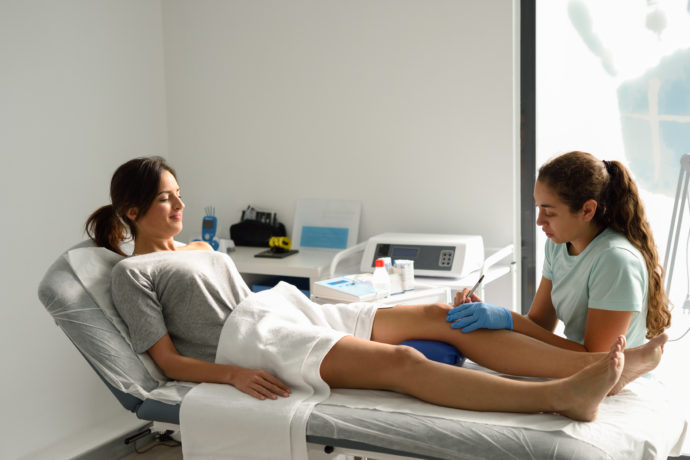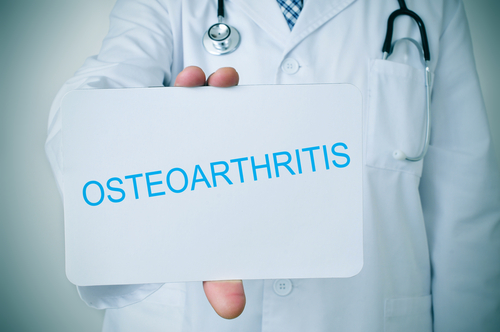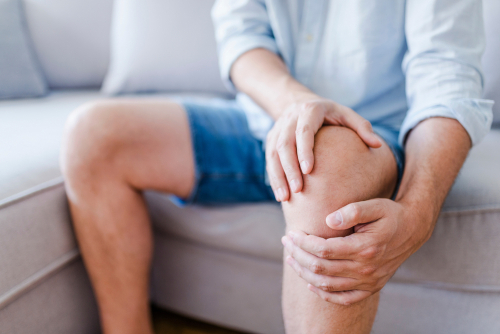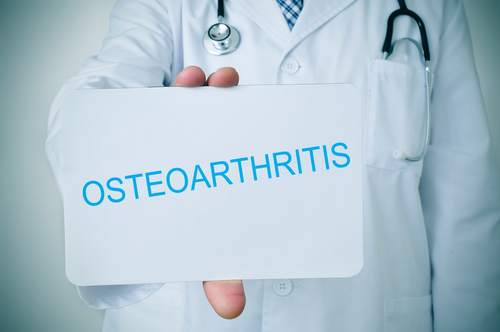
A randomized controlled trial recently published in Arthritis Research & Therapy compared the efficacy of different levels of electroacupuncture (EA) in treating chronic pain by increasing conditioned pain modulation (CPM) function in patients with knee osteoarthritis (KOA).
“It has been demonstrated that the intensity of EA is very important for its analgesic effect in animal experiments. Moreover, Barlas Panos found that high intensity of EA is more effective in relieving experimental pain in healthy human volunteers than low intensity of EA in [a randomized controlled trial]. However, the effects of high or low intensity of EA (strong or weak EA) on chronic pain in patients with KOA remain unknown,” the researchers wrote. Prior research also found that high intensity EA improves CPM function in animal models, they added.
For the present study, KOA patients aged ≥ 50 years who were recruited between November 2014 and March 2016 were randomized 2:1:1 to receive strong EA, weak EA, or sham EA. Patients were excluded based on the following criteria:
- Previous adverse reactions to acupuncture
- Comorbidities including severe cardiovascular, cerebral, hepatic, renal, or hematopoietic diseases
- Disorders in addition to KOA that might affect the knee
- Pregnancy/attempting to become pregnant/lactating
- History of mental illness
Over a two-week period, patients underwent 10 30-minute acupuncture sessions and were evaluated at baseline and at the end of weeks one and two. The primary outcomes were visual analog scale (VAS) for pain (scores ranged from 0 [no pain] to 10 [pain as bad as it could be]), CPM value, and Chinese translations of the Western Ontario and McMaster Universities Osteoarthritis Index (WOMAC).
Strong EA Best Way to Relieve Pain
The final analysis included 145 patients in the strong EA group, 72 in the weak EA group, and 75 in the sham EA group; mean ages were 64.6 years, 63.7 years, and 61.9 years, respectively. The mean baseline CPM function score in the strong EA group was 9.49 and at week two was 24.34; in the weak EA group, baseline and two-week scores were 9.86 and 14.61, respectively; and in the sham EA group, scores were 9.46 and 10.89, respectively.
“Moreover, at the end of week 2, VAS value, WOMAC, and all secondary outcomes (NPRS, ES, and PPI) were significantly lower in the two true EA groups than in the sham EA group (P < .01 for all comparisons), and strong EA was more effective in improving VAS, NPRS, and ES than weak EA,” the authors wrote.
Ten patients experienced serious adverse events, all of which were determined to be unrelated to the EA treatment: coronary heart disease (n = 5), stroke (n = 1), fracture (n = 1), pulmonary embolism (n = 1), lung infection (n = 1), and nephritis (n = 1). AEs were reported in 15.2% of strong EA patients, 13.9% of weak EA patients, and 14.7% in sham EA patients.
The researchers concluded that “strong or weak EA should be administered for at least 2 weeks to exert a clinically important effect on KOA. Strong EA was better than weak or sham EA in reducing VAS and improving CPM function and was the most effective in alleviating pain intensity and the development of chronic pain of KOA patients.”







 © 2025 Mashup Media, LLC, a Formedics Property. All Rights Reserved.
© 2025 Mashup Media, LLC, a Formedics Property. All Rights Reserved.